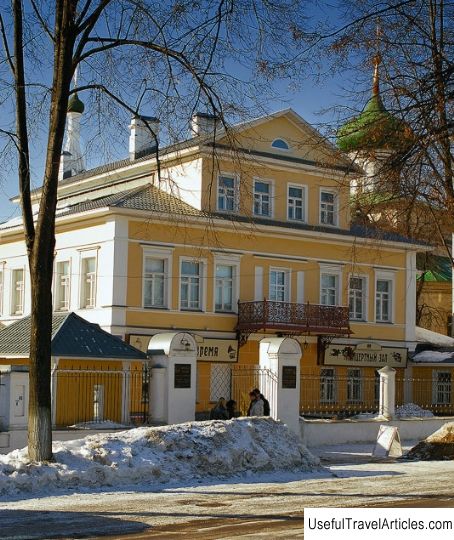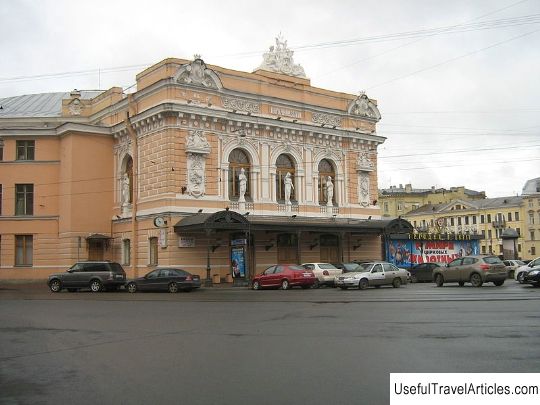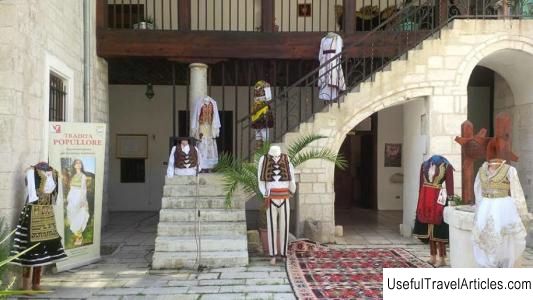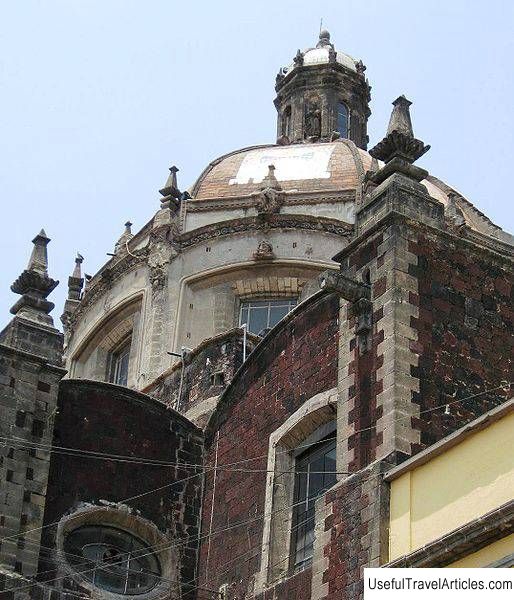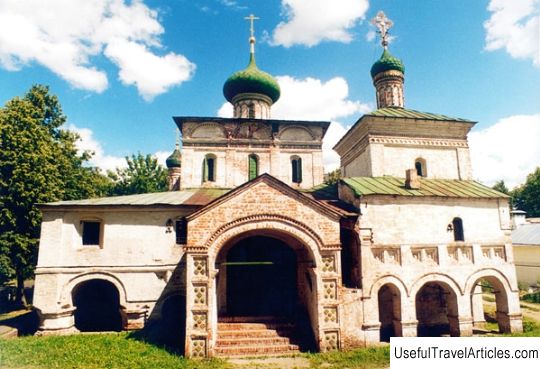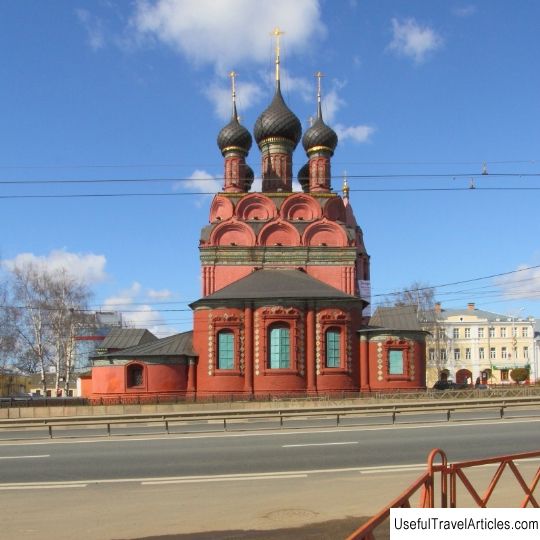Museum ”Music and Time” description and photos - Russia - Golden Ring: Yaroslavl
Rating: 8,4/10 (7805 votes) Museum "Music and Time" description and photos - Russia - Golden Ring: Yaroslavl. Detailed information about the attraction. Description, photos and a map showing the nearest significant objects. Photo and descriptionThe Music and Time Museum is the first private museum in Yaroslavl. It stands on the Volga embankment. The museum belongs to D.G. Mostoslavsky - a famous artist of the original genre, an illusionist, who is passionate about collecting and collecting antiques. The museum was opened in November 1993. Since then, tens of thousands of people have visited it. People come here from different parts of Russia and from abroad. The Mostoslavsky Museum is known and loved. Many people come especially to see his collections. The museum is constantly developing, its collections are being updated, it is acquiring new features. John Grigorievich Mostoslavsky was born in Blagoveshchensk in a family of actors. The craving for collecting manifested itself already in childhood. At first he just collected bells, coins, horseshoes for luck. Then this childish hobby grew into professional collecting. John Grigorievich came to the city of Yaroslavl forty years ago. He was a magician and toured a lot with his family around the world. Thanks to the inexhaustible energy of Mostoslavsky, the museum has become the hallmark of Yaroslavl, one of the most visited tourist sites. The Museum "Music and Time" is one of the best antique collections in Russia, part of it is part of the non-state funds of the Ministry of Culture of Russia. The museum occupies the buildings of the Vakhrameevs 'merchants' estate dating back to the 18-19th centuries. and restored by John Mostoslavsky. The museum itself is located in a house to the left of the main building. It houses three halls dedicated to the history of ancient clocks, musical instruments, irons. The main place in the exposition belongs to all kinds of bells: girth, subduction, botalo, table bells, bells, fishing door bells, etc. Today in the collection of Mostoslavsky there are more than a thousand bells. The exposition presents the famous Pavlovsk, Valdai, Purekh, Kasimov bells and bells. Many bear the names of the craftsmen who cast them and the dates of the castings. In the museum you can listen to the sound of a German organ, an American harmonium, music boxes, a small French piano, a barrel organ. The guests are amazed by the variety of gramophones and gramophones. The museum also displays a huge collection of gramophone records. The record library has about 15 thousand records, among which you can find lifetime recordings of Chaliapin, Sobinov, Lemeshev, Caruso, Kozlovsky, Batistini, Utesov, Vertinsky, Shulzhenko, Yurieva, Kozin. There are also recordings of reports of famous political figures of the state: Lenin, Stalin, Molotov. The musical world is complemented by the amazing chimes and chiming of clocks of famous European masters: Paul Bure, Gustave Becker, Moser. All clocks have different times - this was intended by the owner so that visitors during the tour could hear the sounds of different clocks. Among the old clocks are wooden clocks that belonged to the brother of A.P. Chekhov. The collection of irons is devoted to a completely different musical theme. The collection includes over 350 items. This collection can easily trace the history of the development of the iron - from a primitive wooden "ruble" to alcohol, working on the principle of a kerosene lamp. In order to collect this collection, it took thirty years. The collection of gold-background icons of the 19-20 centuries, most of them made in the Yaroslavl region, is a real decoration of the museum. The main building houses: on the ground floor - exhibitions of samovars, Old Believer plastics, Kasli casting, on the second floor there is a buffet and a functioning organ hall. There is a porcelain exhibition in a small building behind the estate. The samovars in the museum were brought from different Russian cities, mainly products of Tula masters. On samovars with awards from international exhibitions, you can see seals with the names of the famous "samovar" dynasties: Shemarins, Batashevs, Somovs, Vorontsovs. In a small hall there is a collection of copper-cast plastics, it is also called the Old Believers, since it reached its peak even before the church schism. The peculiarity of this museum is that all the exhibits presented in it are in working order, you can touch them and hear how they sound. Visitors to the museum can also visit a picturesque garden with fountains and ponds. In the garden you can see the Manneken Pis fountain-sculpture, which is a copy of the famous fountain in Brussels by G. Duquesnoy.           We also recommend reading Guruvayur Sri Krshna Temple description and photos - India: Kerala Topic: Museum ”Music and Time” description and photos - Russia - Golden Ring: Yaroslavl. |
